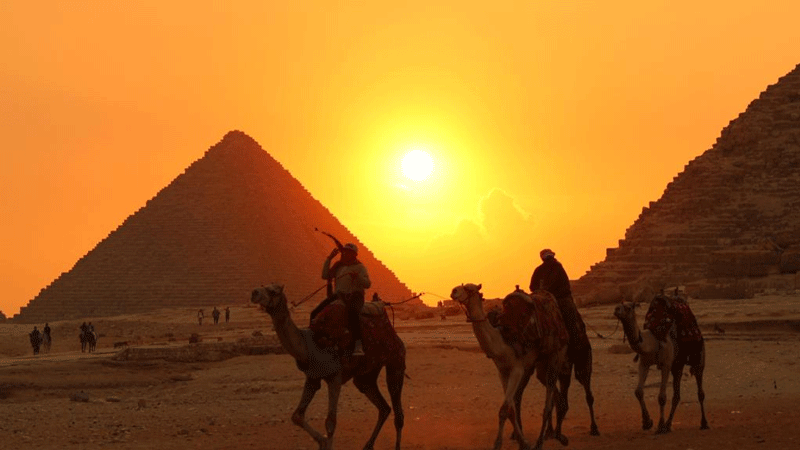Xi Jinping leads China's drive toward rural modernization
BEIJING, Dec. 23 (Xinhua) -- China has embarked on a fast track of development in pursuing the modernization of agriculture and rural areas thanks to the persistent and concerted efforts mobilized and guided by the Chinese leadership with Xi Jinping at its core.
Since the 18th National Congress of the Communist Party of China (CPC) in 2012, the CPC Central Committee, with Xi at its core, has attached great importance to work related to agriculture, rural areas, and farmers. They have led people all over the country to develop agriculture, improve the living environment in rural areas and enrich rural residents, making great achievements in the cause of poverty alleviation and rural revitalization.
From the perspective of coping with the world's profound changes unseen in a century, stabilizing agriculture and consolidating the foundation of agriculture, rural areas and farmers are the "ballast stones" for adapting to changing situations and breaking new ground, Xi Jinping, general secretary of the CPC Central Committee, once noted.
HIGH-QUALITY, EFFICIENT AGRICULTURE
A typical example is grain production, which is the lifeline of food security, one of the most fundamental interests of China, the world's most populous country.
Faced with the fallout of the COVID-19 pandemic, the impact of extreme weather, and the price hike of agricultural materials, China again secured its people's rice bowls with a bumper grain harvest this year.
Data from the National Bureau of Statistics showed the country's grain output totaled 686.55 billion kg this year, up 3.7 billion kg compared to 2021. This year, the country has seen its grain harvest exceed 650 billion kg for the eighth consecutive year.
The harvest this year was hard-won as extreme weather posed great challenges. The rainy autumn in north China last year postponed the planting of one-third of its winter wheat, while the hottest summer since 1961, when China started to keep complete meteorological records, exerted pressure on the harvesting of China's main grain output.
To overcome difficulties, the CPC Central Committee has implemented a series of measures, such as keeping improving water conservancy infrastructure construction, stepping up the application and popularization of agricultural technologies, as well as fostering a high public awareness of supporting farming and food production.
Under Xi's leadership, China is also transforming its agricultural system with a greater focus on providing more high-quality farm produce and accelerating innovation in agricultural technology.
In April, when inspecting southern China's Hainan Province, Xi visited a local seed laboratory and approved of the province's efforts in exploring an innovative mode for agricultural science and technology to support and guarantee national food security.
If we Chinese people want to hold tight in hands our rice bowl, we must develop the seed industry on our own. Efforts must be made to realize self-reliance in seed technology and make sure that sources of seeds are under our own control. We must secure China's food supply with our own seeds, Xi said.
In the past decade, China has optimized its supply of agricultural products so as to meet people's demand for more diversified choices, with the country's plantation area of soybean and other oil-yielding crops expanding steadily and produce of high-quality rice and wheat becoming increasingly abundant.
So far, China's output of vegetables, fruits, tea, pork, mutton, poultry, eggs, and aquatic products ranks the highest globally.
The achievements resulted from China's push for modern agriculture, with more focus on both quantity and quality, innovation-driven farming, as well as green and low-carbon sustainable development.
From 2012 to 2021, the overall level of mechanization in plowing, sowing, and harvesting of crops had increased from 57.2 percent to 72 percent, and the contribution of technological advances to growth in agricultural production had been raised to over 61 percent.
In addition, China has improved the transfer of land-management rights. In 2021, the transfer of land management rights covered 37.1 million hectares, giving an appropriate and effective boost to the country's large-scale agricultural operation.
New types of agricultural operating entities, mainly family farms, farmers' cooperatives, and agricultural enterprises, have become an important force in promoting the development of modern agriculture. The number of social service organizations of various types has reached 1.041 million, helping individual farming households capitalize on the development of modern agriculture.
BUILDING BEAUTIFUL VILLAGES
Xi has stressed that an important task in implementing the rural revitalization strategy is to promote green development and eco-friendly lifestyles, improve the ecology and environment, and preserve or restore beautiful rural landscapes.
The work has not been easy and often involved solving one small thing after another in people's everyday life; for instance, toilet renovation and domestic waste disposal.
At the end of 2021, the coverage rate of sanitary toilets exceeded 70 percent in China's rural areas, while over 90 percent of all villages got facilities to collect and treat household garbage, and the discharge of rural domestic sewage was basically brought under control.
Controlling agricultural pollution is another meaningful work to accelerate clean agriculture. In 2021, the use of pesticides and chemical fertilizers in farming was reduced by more than 17 percent and 13.8 percent, respectively, compared with 2015. And the overall utilization rate of straw treatment, as well as livestock and poultry manure, reached 76 percent and 88.1 percent, respectively.
Rural infrastructure has been continuously improved, making production and life in the countryside more convenient. Since the country carried out an action plan on rural construction, 84 percent of rural residents have access to tap water, and almost every village has got access to electricity, hardened roads, buses, optical fiber, and 4G networks.
Xi said while inspecting the Tibet Autonomous Region in 2021 that the achievements made in poverty alleviation should be consolidated and expanded, in coordination with the extensive drive for rural revitalization.
He also stressed the need to do solid work in terms of people's well-being, including employment, education, social security, medical services, elderly care, childcare, and housing.
Taking medical services for example, by the end of 2021, medical and health institutions had been available in all Chinese counties, townships, and villages. Currently, China has 23,000 county-level medical institutions, 35,000 township health centers, and 599,000 rural clinics.
ENRICHING RURAL RESIDENTS
After eight years of arduous anti-poverty fighting, China has lifted 98.99 million impoverished rural residents living under the current poverty line out of poverty and removed 832 impoverished counties from the poverty list.
Rural residents' well-being has been significantly improved, with their basic living needs for water and electricity supply, transportation, education, and medical care all being addressed.
After a bumper wheat harvest this year, Xu Congxiang, a large-scale grain producer in Taihe County, east China's Anhui Province, received a reply letter from President Xi Jinping.
In the letter, Xi said that in recent years, the CPC Central Committee has rolled out a slew of policies to support grain production, with the purpose of ensuring the Chinese people hold their rice bowls firmly in their own hands, and farmers earn tangible benefits and make their lives better.
To safeguard farmers' interests, the country has steadily raised the minimum purchase prices of rice and wheat and allocated 40 billion yuan (about 5.73 billion U.S. dollars) from the central government budget to ease the impact of higher costs in agricultural supplies this year.
"The wide variety of government support policies have significantly lifted our grain-growing spirit," said Xu.
Over the years, Chinese rural residents have seen tangible improvements in their income and living standards. The country's per capita disposable income of rural residents reached 18,931 yuan in 2021, more than doubling that of 2012.
The income gap between urban and rural residents has also narrowed, with the ratio between the per capita disposable income for urban and rural residents declining from 2.88:1 in 2012 to 2.5:1 in 2021.
Photos
Related Stories
- Xi exchanges congratulations with governor-general of New Zealand over 50th anniversary of diplomatic ties
- Xi meets United Russia party chairman Medvedev
- Xi says China ready to advance relations with Australia based on mutual respect, win-win principles
- Xi talks with Cote d'Ivoire's president over phone
- Xi says China, Germany partners of dialogue, development, cooperation, and for handling global challenges
Copyright © 2022 People's Daily Online. All Rights Reserved.









